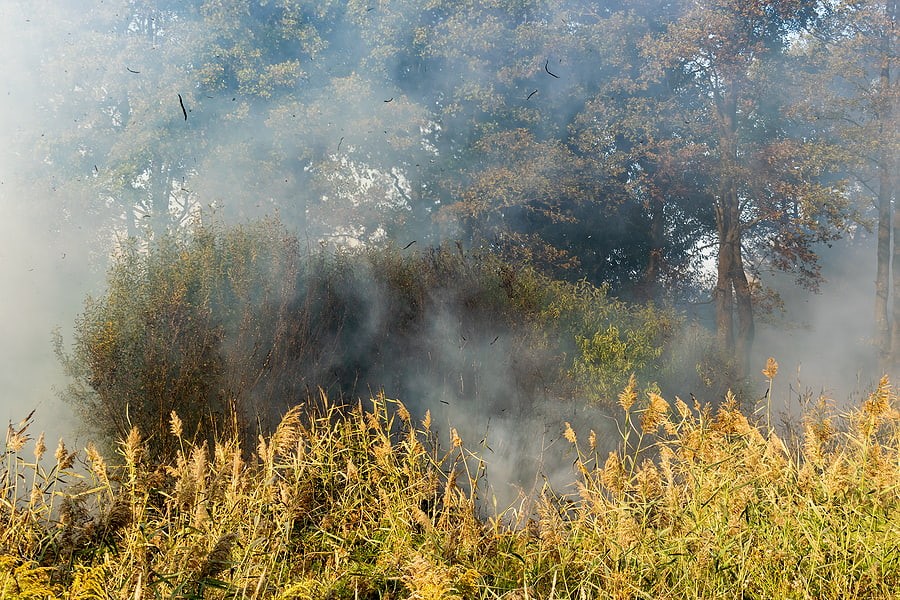News
Peatland Burning To Be Banned To Protect Nature-Rich Habitats
As part of government water management plans to improve water and air quality, help protect local communities from flooding, provide wildlife with valuable habitats and support carbon sequestration, nature-rich peatland habitats will be better protected through a ban on burning in the uplands.
Peatlands – which are often described as the country’s lungs – are an essential resource that supports local biodiversity and helps to protect human health and wellbeing. They store carbon, drive down flood risks, improve water quality and help support rare wildlife like curlews and the golden plover.
Over the years, peatland burning has taken place for livestock grazing or grouse moor management, with the practice encouraging new heather and grass growth.
However, because peatlands store such significant amounts of carbon, burning is particularly bad for the environment, as it releases stored carbon into the atmosphere, thereby contributing to climate change.
Burning also has the potential to damage peatland ecosystems and lead to biodiversity loss, as well as causing soil erosion and pollution/nutrient release into waterways, which negatively affects water quality.
Despite the fact that peatlands are so valuable, some 80 per cent of them in England are currently in a state of degradation, with burning increasing heather growth that, in turn, dries out the peatland so it emits instead of stores carbon.
Furthermore, burning vegetation on a scale this big causes harmful smoke to be released into the air, affecting air quality and emitting harmful pollutants that put human health at risk, particularly in relation to the likes of asthma, lung cancers, cardiovascular disease and strokes.
If the proposed changes are pushed through, an area equivalent to the size of Greater London, Greater Manchester and the West Midlands combined would be better protected, covering over 368,000 hectares of deep peat.
Mary Creagh, nature minister, said: “Our peatlands are this country’s Amazon Rainforest, home to our most precious wildlife, storing carbon and reducing flooding risk.
“The UK has 13 per cent of the world’s blanket bog. A rare global habitat, it is a precious part of our national heritage and that is why we‘re announcing a consultation on these measures to ensure deep peat is better protected.
“These changes will benefit communities by improving air and water quality, and protect homes and businesses from flood damage, which supports economic stability and security under our Plan for Change.”
Peatlands and water quality
When it comes to delivering long-term public water supply and building resilience into the network, peatland restoration should be considered as one of the key solutions to the problem, helping to tackle the root cause head on, rather than simply treating the symptoms.
Peatlands serve as the headwaters for some of the UK’s biggest catchment areas. For example, peatlands in the Peak District deliver water to both Sheffield and Manchester, while river corridors like The Broads provide natural water storage reserves within the floodplain.
Because up to 70 per cent of potable water in the UK comes from peatland habitat catchments, it’s vital to protect these resources for future generations… yet, according to the IUCN UK Peatland Programme, the amount of dissolved organic carbon (which turns peaty water brown) has doubled across many catchments over the last 30 years.
Restoring peatlands could be a cheaper and more sustainable way of improving raw water quality from peaty catchments, reducing the need for expensive water treatment and chemical usage.
Restoration could also help to regulate flooding, with revegetated peatland delivering significant increases in the time between peak rainfall and peak runoff, and a reduction in peak flow, with the vegetation helping to slow water flow over the land surface.
Research shows that the water supplied by peatlands is a significant source of drinking water for the UK and, indeed, the world at large – but it seems that just 28 per cent of peatlands that serve large populations are protected or in pristine condition.
Professor Joseph Holden, director of water@leeds, said: “The UK consumes approximately 1.56 cubic kilometres of drinking water per year that has come from peatlands; that is roughly the volume of 630,000 Olympic-sized swimming pools.
“This resource supports the equivalent of 28.3 million people or more than 43 per cent of the UK’s population. Threats to peatlands could mean a significant threat to the UK ’s water security.”
Making further comments, Dr Paul Morris from the University of Leeds observed that climate change is further threatening the stability of peatlands, as well as water treatment costs… and, in England, up to 96 per cent of deep peatlands are now being degraded by historic pollution, land management techniques like drainage and erosion.
He said: “The UK consumes approximately 1.56 cubic kilometres of drinking water per year that has come from peatlands; that is roughly the volume of 630,000 Olympic-sized swimming pools.
“This resource supports the equivalent of 28.3 million people or more than 43 per cent of the UK’s population. Threats to peatlands could mean a significant threat to the UK ’s water security.
Noting that the costs of managing further degradation could be significant, Dr Morris concluded by saying that restoration and protection of peatlands could be the more cost-effective way of safeguarding water quality over the long term.
